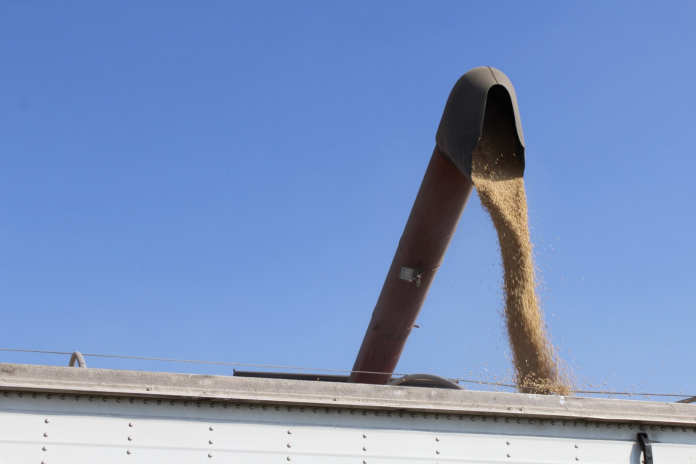“Steady by jerks” was the catch phrase of a certain Pierpont Ph.D. and farmer I knew in my youth. That phrase sums up recent trading on the Chicago Board of Trade.
Grain prices go up, make new contract highs and then go sharply lower. Sometimes this is because of spec fund selling when we go up; sometimes we struggle to explain the wide swings in the market.
Such was the situation last week, as corn futures gained 171⁄2 cents on the May contract, and the December contract gained 12 cents. In the process, we made new contract highs for each, with the May at $5.95 and the December at $5.033⁄4.
Then, we traded lower until going into the morning of April 13 when the May futures were down to $5.651⁄2 and the December contract was down to $4.943⁄4. We were trading up three for each, at $5.72 and $4.991⁄2 respectively.
Jerked around
The trend for several months has been “steady by jerks.” We keep getting higher, but with large swings in prices. The market seems driven to go higher by fundamental factors, then corrected lower by technical ones.
We focus on tightening supplies and the trend of the U.S. Department of Agriculture to lower carryout, especially for corn, and then we focus on the higher chart numbers and sell off.
The highs April 9 in corn prices came with the latest USDA supply and demand report, and China talk. USDA lowered ending stocks from 1.504 billion to 1.354 billion bushels. This is the current estimate of what will be left in the country at the end of the current marketing year, Aug. 31.
China questions
Private sources have been talking about a carryout as low as 1.1 billion for a couple of months. Part of this assessment comes from cash traders’ information on Chinese export contracts. Some analysts have been dubious about the Chinese follow-through as far as actual delivery of the contracted grain, especially corn.
Remember, the large corn exports to China are unprecedented. They normally buy soybeans, but little corn. However, as the price continues to go up, the Chinese keep executing the contracts.
Now the only question that remains is do we and the Chinese have the infrastructure capacity to deliver all the contracted grain.
Soybeans
Soybeans, meanwhile, made no gains for the week. Beans were actually down April 9 after the USDA report, on the estimate of a slightly higher Brazilian crop. Soybeans, also, have rallied on tight supplies, and the idea that we will import beans this summer to crush. Widespread reports have processors refusing forward sales contract in anticipation of the unknowns about the import costs and demand.
We made the last highs April 1, at $14.561⁄4 for the May contract against the contract high March 8 at $14.60. So, we confirmed the high and did not break it.
We were trading May at $13.871⁄2 the morning of April 13. The new crop November futures contract continued to lag, at $12.57.
With last week’s report that we will not even plant 88 million acres of beans this spring, we can look for the November contract to gain on the nearby this summer until we get late enough on the calendar that speculation and hedging is more focused on the new crop.
Remember, in a big rally like this one, the big speculation is in the nearby months.
Spring planting
Spring weather continues to be unprecedented in Northeast Ohio. We are historically dry, although we had a couple of inches of rain April 10 and April 11.
It is notable how much primary tillage has been done, and how much fertilizer has been put down. I am even seeing NH3 preplant, which is unusual in our area. Spray rigs are putting on burndown, as grasses are already greening up. Drain tile are getting buried. Farmers are poised to plant, held back only by a calendar which tells them the snow has not ended.
Farther west, corn and beans are being planted, although I hope there is extra seed around if we get a cold snap. Soon we will be focused on planting the crop, not selling it.
Now is the time that some should be sold, although the calendar also tells us that we are likely to have the annual highs in the usual time frame in June.













